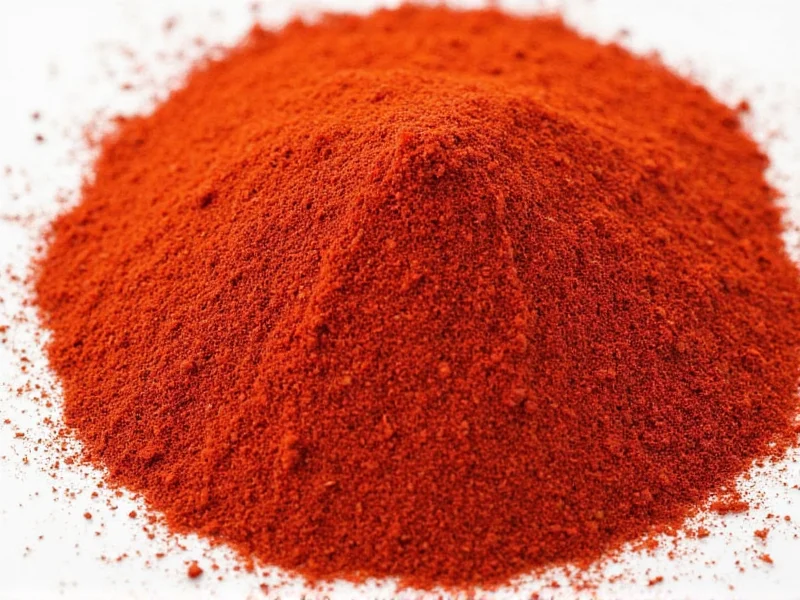Understanding Crushed Red Pepper Composition
When you sprinkle that familiar red seasoning onto pizza or pasta, you're likely using a blend of dried hot peppers rather than a single variety. The term "crushed red pepper" refers to a product made from dried red chili peppers that have been coarsely ground or crushed. While many consumers assume it's exclusively cayenne pepper, the reality is more nuanced.
Commercial crushed red pepper typically contains a mixture of peppers selected for consistent heat and flavor. The primary components usually include:
| Pepper Variety | Scoville Heat Units | Flavor Profile | Common Inclusion |
|---|---|---|---|
| Cayenne | 30,000-50,000 | Sharp, bright heat | Primary component |
| Ancho (dried poblano) | 1,000-2,000 | Smoky, sweet, raisin-like | Common blend ingredient |
| Serrano | 10,000-23,000 | Grassy, bright heat | Occasional addition |
| Red Jalapeño | 2,500-8,000 | Green, vegetal notes | Less common inclusion |
Distinguishing Crushed Red Pepper from Similar Products
Many home cooks confuse crushed red pepper with other red pepper products, but important distinctions exist. Understanding what type of pepper is crushed red pepper requires recognizing how it differs from similar seasonings.
Crushed red pepper vs. red pepper flakes: These terms are often used interchangeably in the United States, particularly in grocery stores. However, subtle differences may exist based on regional preferences and manufacturer specifications. Some producers use "red pepper flakes" to indicate a slightly finer grind, while others maintain identical products with different labeling.
Crushed red pepper vs. cayenne powder: This represents a significant difference that home chefs should understand. Cayenne powder is a fine, pure powder made exclusively from cayenne peppers, while crushed red pepper contains visible flakes with seeds and membranes from multiple pepper varieties. Cayenne powder delivers more consistent, intense heat (typically 30,000-50,000 SHU), whereas crushed red pepper offers variable heat levels depending on the specific blend.
The confusion around what pepper is crushed red pepper stems partly from inconsistent labeling practices across manufacturers. Some premium brands specify their exact pepper blend, while generic store brands may vary their formulation based on seasonal availability of different peppers.
Culinary Applications and Characteristics
Crushed red pepper's unique composition gives it distinctive culinary properties that differ from single-variety pepper products. The presence of seeds and membranes in the flakes creates a more complex heat experience compared to pure pepper powders.
When cooking with crushed red pepper, consider these characteristics:
- Heat distribution: The flakes distribute unevenly in liquids, creating pockets of intense heat
- Bloomed flavor: Heating the flakes in oil first releases more complex flavors than adding them at the end
- Visual appeal: The red flakes provide attractive color contrast in finished dishes
- Texture: The coarse texture remains somewhat distinct even after cooking
Professional chefs often prefer crushed red pepper over cayenne powder for finishing dishes because the visible flakes signal to diners that heat is present. This visual cue helps manage customer expectations about spice levels in menu items.
Practical Usage Guidance
Understanding what type of pepper is crushed red pepper helps you use it more effectively in your cooking. Here are practical recommendations for home cooks:
Storage: Keep crushed red pepper in an airtight container away from light and heat. Properly stored, it maintains optimal flavor for 1-2 years, though it remains safe indefinitely. The oils in the seeds can eventually go rancid, so check for any off smells before use.
Substitutions: If you need crushed red pepper and don't have it, consider these alternatives:
- For similar texture: Create your own blend using 2 parts cayenne flakes, 1 part ancho flakes
- For similar heat level: Use half the amount of cayenne powder (it's more concentrated)
- For milder option: Substitute paprika with a pinch of cayenne
Cooking techniques: Add crushed red pepper early in cooking for mellow, integrated heat, or sprinkle at the end for brighter, more pronounced spice. When making oil-based sauces, "bloom" the flakes by heating them in the oil for 1-2 minutes before adding other ingredients to maximize flavor extraction.
Regional Variations in Crushed Red Pepper
The specific composition of crushed red pepper varies significantly by region and manufacturer. In Italy, for example, what Americans call "crushed red pepper" often refers specifically to peperoncino (Calabrian chili), which has a distinctive fruity flavor. American commercial blends typically contain more cayenne for consistent heat.
When traveling or purchasing international products, recognize that the question what pepper is crushed red pepper might yield different answers depending on location. Specialty food stores often carry region-specific crushed pepper blends that highlight local varieties.











 浙公网安备
33010002000092号
浙公网安备
33010002000092号 浙B2-20120091-4
浙B2-20120091-4